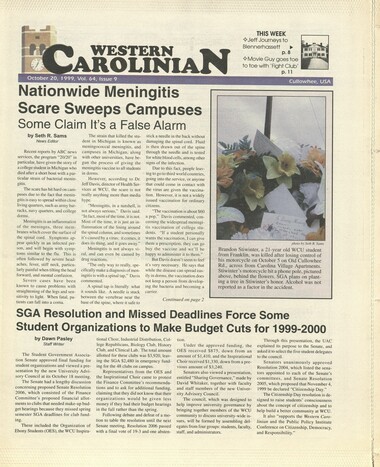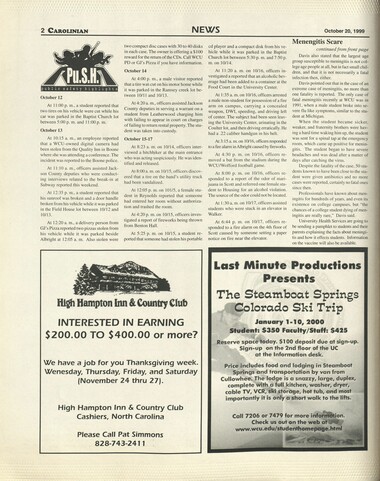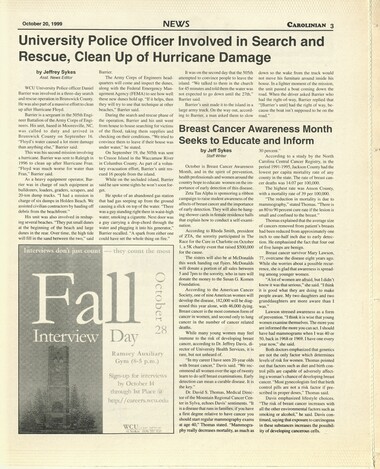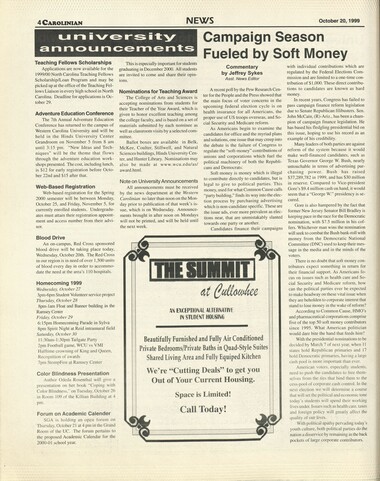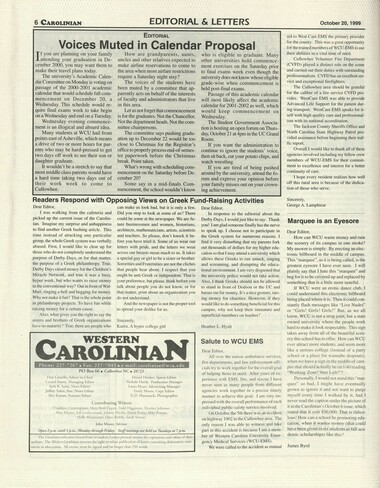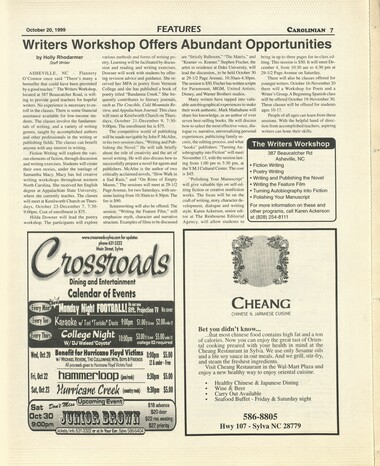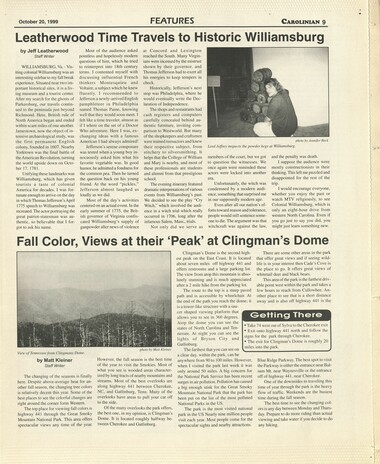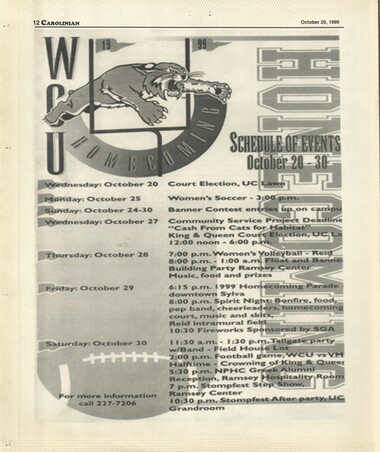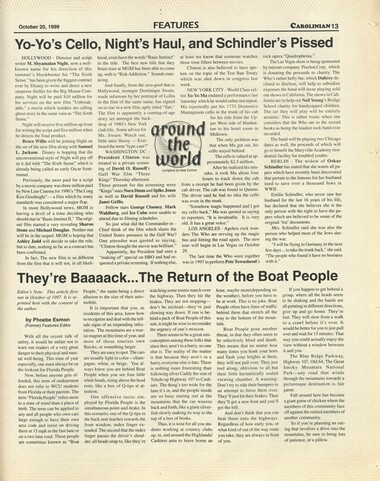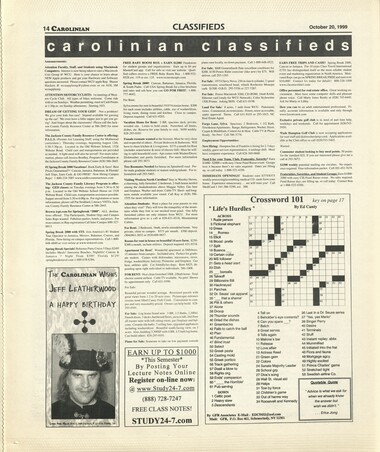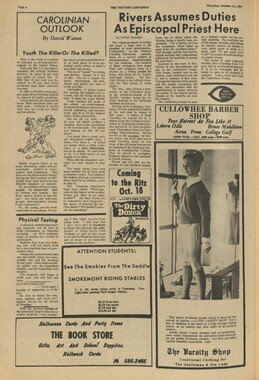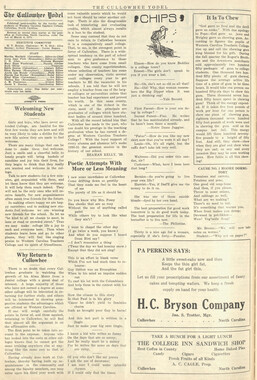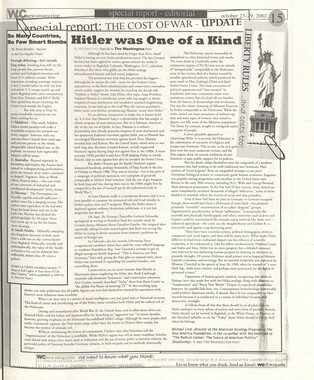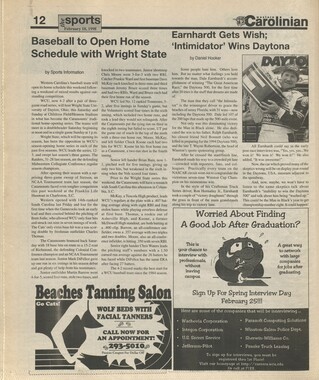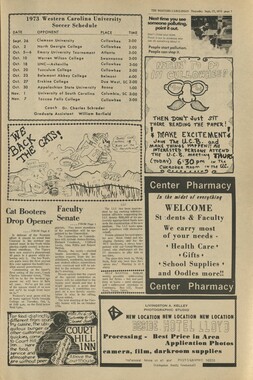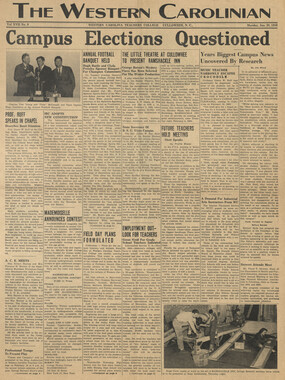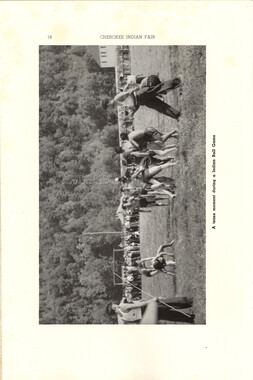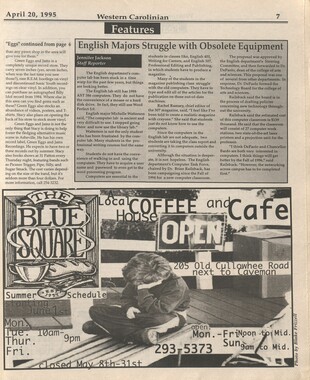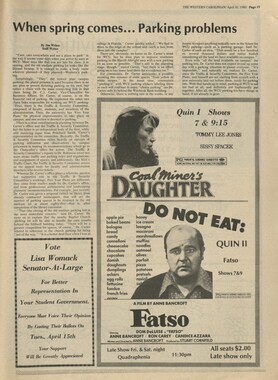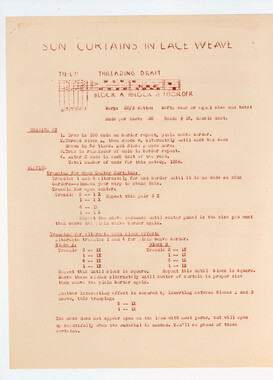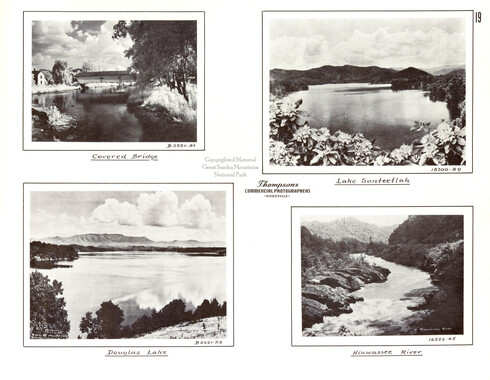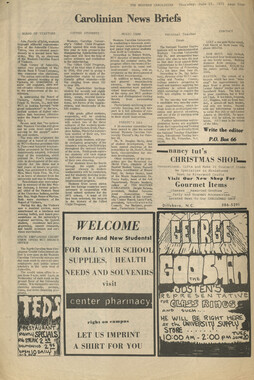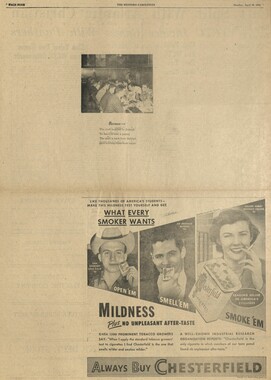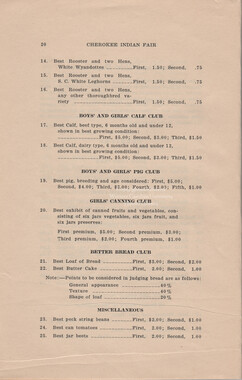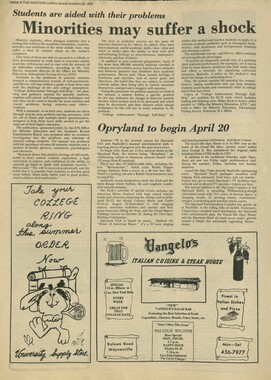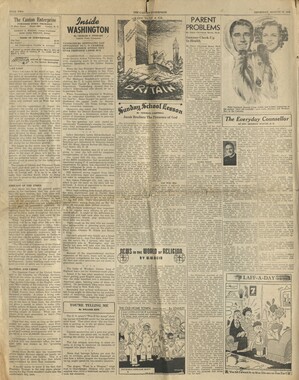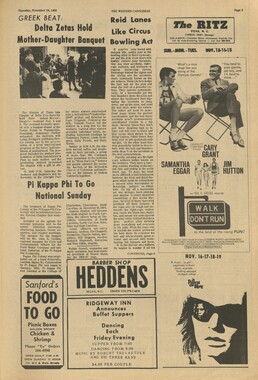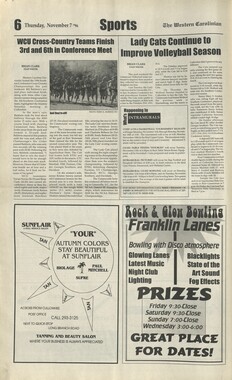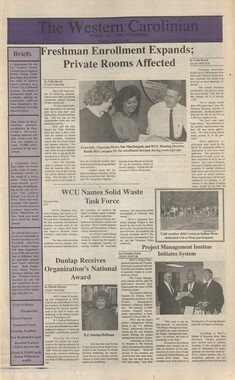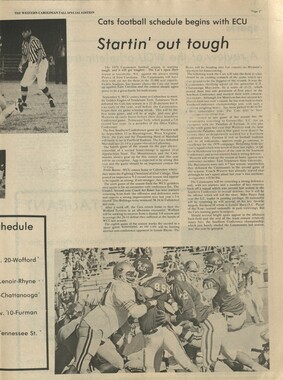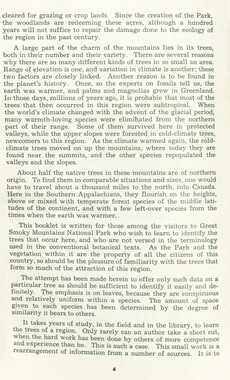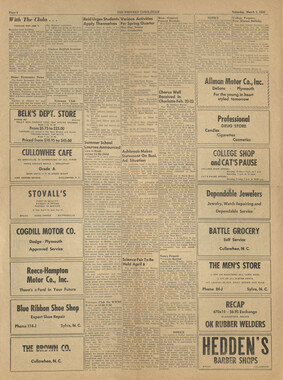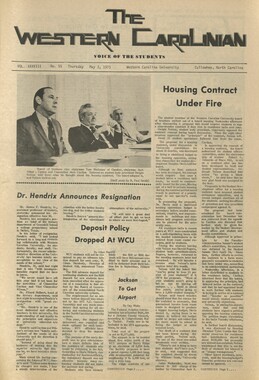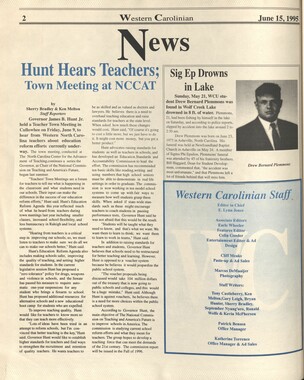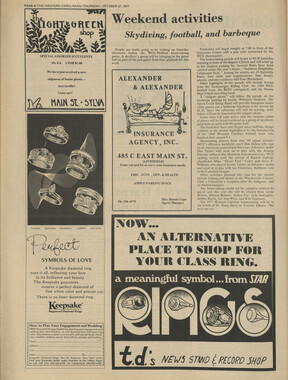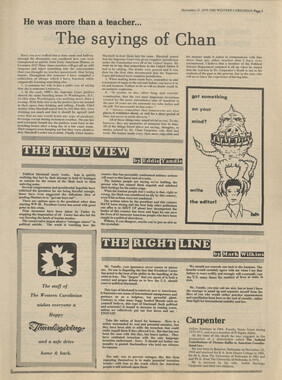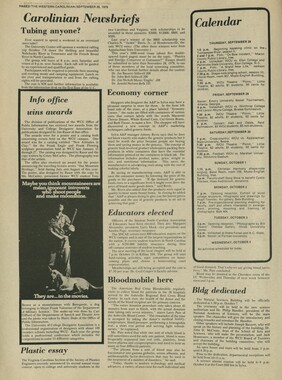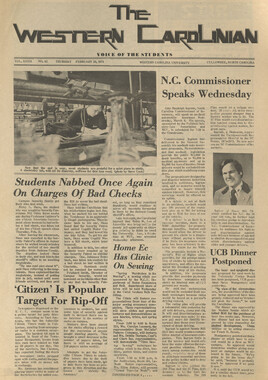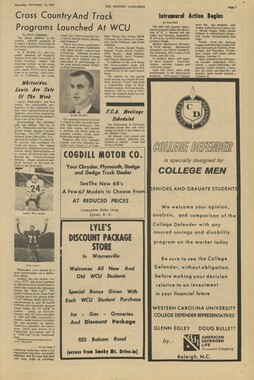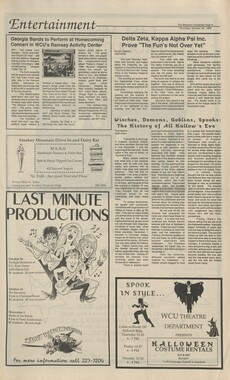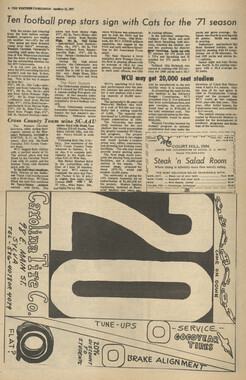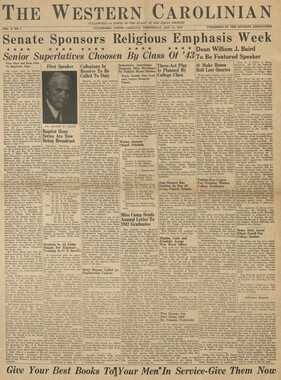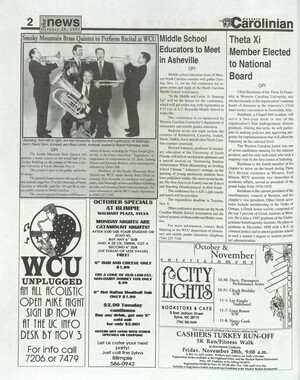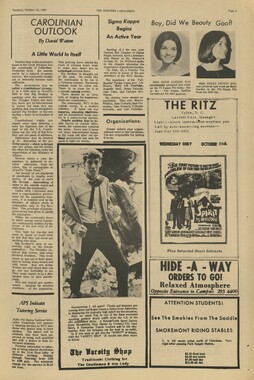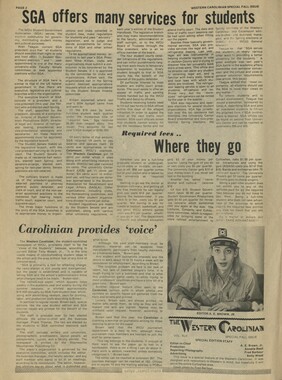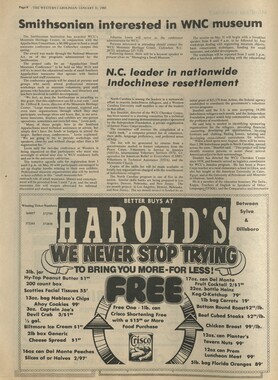Western Carolina University (20)
View all
- Canton Champion Fibre Company (2308)
- Cherokee Traditions (293)
- Civil War in Southern Appalachia (165)
- Craft Revival (1942)
- Great Smoky Mountains - A Park for America (2683)
- Highlights from Western Carolina University (430)
- Horace Kephart (941)
- Journeys Through Jackson (154)
- LGBTQIA+ Archive of Jackson County (15)
- Oral Histories of Western North Carolina (314)
- Picturing Appalachia (6679)
- Stories of Mountain Folk (413)
- Travel Western North Carolina (160)
- Western Carolina University Fine Art Museum Vitreograph Collection (129)
- Western Carolina University Herbarium (92)
- Western Carolina University: Making Memories (708)
- Western Carolina University Publications (2283)
- Western Carolina University Restricted Electronic Theses and Dissertations (146)
- Western North Carolina Regional Maps (71)
- World War II in Southern Appalachia (131)
University of North Carolina Asheville (6)
View all
- Allanstand Cottage Industries (62)
- Appalachian National Park Association (53)
- Bennett, Kelly, 1890-1974 (1295)
- Berry, Walter (76)
- Brasstown Carvers (40)
- Carver, George Washington, 1864?-1943 (26)
- Cathey, Joseph, 1803-1874 (1)
- Champion Fibre Company (233)
- Champion Paper and Fibre Company (297)
- Cherokee Indian Fair Association (16)
- Cherokee Language Program (22)
- Crowe, Amanda (40)
- Edmonston, Thomas Benton, 1842-1907 (7)
- Ensley, A. L. (Abraham Lincoln), 1865-1948 (275)
- Fromer, Irving Rhodes, 1913-1994 (70)
- George Butz (BFS 1907) (46)
- Goodrich, Frances Louisa (120)
- Grant, George Alexander, 1891-1964 (96)
- Heard, Marian Gladys (60)
- Kephart, Calvin, 1883-1969 (15)
- Kephart, Horace, 1862-1931 (313)
- Kephart, Laura, 1862-1954 (39)
- Laney, Gideon Thomas, 1889-1976 (439)
- Masa, George, 1881-1933 (61)
- McElhinney, William Julian, 1896-1953 (44)
- Niggli, Josephina, 1910-1983 (10)
- North Carolina Park Commission (105)
- Osborne, Kezia Stradley (9)
- Owens, Samuel Robert, 1918-1995 (11)
- Penland Weavers and Potters (36)
- Roberts, Vivienne (15)
- Roth, Albert, 1890-1974 (142)
- Schenck, Carl Alwin, 1868-1955 (1)
- Sherrill's Photography Studio (2565)
- Southern Highland Handicraft Guild (127)
- Southern Highlanders, Inc. (71)
- Stalcup, Jesse Bryson (46)
- Stearns, I. K. (213)
- Thompson, James Edward, 1880-1976 (226)
- United States. Indian Arts and Crafts Board (130)
- USFS (683)
- Vance, Zebulon Baird, 1830-1894 (1)
- Weaver, Zebulon, 1872-1948 (58)
- Western Carolina College (230)
- Western Carolina Teachers College (282)
- Western Carolina University (1794)
- Western Carolina University. Mountain Heritage Center (18)
- Whitman, Walt, 1819-1892 (10)
- Wilburn, Hiram Coleman, 1880-1967 (73)
- Williams, Isadora (3)
- Cain, Doreyl Ammons (0)
- Crittenden, Lorraine (0)
- Rhodes, Judy (0)
- Smith, Edward Clark (0)
- Appalachian Region, Southern (2393)
- Asheville (N.C.) (1886)
- Avery County (N.C.) (26)
- Blount County (Tenn.) (147)
- Buncombe County (N.C.) (1664)
- Cherokee County (N.C.) (283)
- Clay County (N.C.) (555)
- Graham County (N.C.) (233)
- Great Smoky Mountains National Park (N.C. and Tenn.) (478)
- Haywood County (N.C.) (3522)
- Henderson County (N.C.) (70)
- Jackson County (N.C.) (4692)
- Knox County (Tenn.) (21)
- Knoxville (Tenn.) (9)
- Lake Santeetlah (N.C.) (10)
- Macon County (N.C.) (420)
- Madison County (N.C.) (211)
- McDowell County (N.C.) (39)
- Mitchell County (N.C.) (132)
- Polk County (N.C.) (35)
- Qualla Boundary (981)
- Rutherford County (N.C.) (76)
- Swain County (N.C.) (2017)
- Transylvania County (N.C.) (247)
- Watauga County (N.C.) (12)
- Waynesville (N.C.) (68)
- Yancey County (N.C.) (72)
- Aerial Photographs (3)
- Aerial Views (60)
- Albums (books) (4)
- Articles (1)
- Artifacts (object Genre) (228)
- Biography (general Genre) (2)
- Cards (information Artifacts) (38)
- Clippings (information Artifacts) (191)
- Crafts (art Genres) (622)
- Depictions (visual Works) (21)
- Design Drawings (1)
- Drawings (visual Works) (184)
- Envelopes (73)
- Facsimiles (reproductions) (1)
- Fiction (general Genre) (4)
- Financial Records (12)
- Fliers (printed Matter) (67)
- Glass Plate Negatives (381)
- Guidebooks (2)
- Internegatives (10)
- Interviews (811)
- Land Surveys (102)
- Letters (correspondence) (1013)
- Manuscripts (documents) (619)
- Maps (documents) (159)
- Memorandums (25)
- Minutes (administrative Records) (59)
- Negatives (photographs) (5651)
- Newsletters (1285)
- Newspapers (2)
- Occupation Currency (1)
- Paintings (visual Works) (1)
- Pen And Ink Drawings (1)
- Periodicals (193)
- Personal Narratives (7)
- Photographs (12982)
- Plans (maps) (1)
- Poetry (5)
- Portraits (1655)
- Postcards (329)
- Programs (documents) (151)
- Publications (documents) (2237)
- Questionnaires (65)
- Scrapbooks (282)
- Sheet Music (1)
- Slides (photographs) (402)
- Sound Recordings (796)
- Specimens (92)
- Speeches (documents) (15)
- Tintypes (photographs) (8)
- Transcripts (322)
- Video Recordings (physical Artifacts) (23)
- Vitreographs (129)
- Text Messages (0)
- A.L. Ensley Collection (275)
- Appalachian Industrial School Records (7)
- Appalachian National Park Association Records (336)
- Axley-Meroney Collection (2)
- Bayard Wootten Photograph Collection (20)
- Bethel Rural Community Organization Collection (7)
- Blumer Collection (5)
- C.W. Slagle Collection (20)
- Canton Area Historical Museum (2110)
- Carlos C. Campbell Collection (198)
- Cataloochee History Project (65)
- Cherokee Studies Collection (4)
- Daisy Dame Photograph Album (5)
- Daniel Boone VI Collection (1)
- Doris Ulmann Photograph Collection (112)
- Elizabeth H. Lasley Collection (1)
- Elizabeth Woolworth Szold Fleharty Collection (4)
- Frank Fry Collection (95)
- George Masa Collection (173)
- Gideon Laney Collection (452)
- Hazel Scarborough Collection (2)
- Hiram C. Wilburn Papers (28)
- Historic Photographs Collection (236)
- Horace Kephart Collection (861)
- Humbard Collection (33)
- Hunter and Weaver Families Collection (1)
- I. D. Blumenthal Collection (4)
- Isadora Williams Collection (4)
- Jesse Bryson Stalcup Collection (47)
- Jim Thompson Collection (224)
- John B. Battle Collection (7)
- John C. Campbell Folk School Records (80)
- John Parris Collection (6)
- Judaculla Rock project (2)
- Kelly Bennett Collection (1314)
- Love Family Papers (11)
- Major Wiley Parris Civil War Letters (3)
- Map Collection (12)
- McFee-Misemer Civil War Letters (34)
- Mountain Heritage Center Collection (4)
- Norburn - Robertson - Thomson Families Collection (44)
- Pauline Hood Collection (7)
- Pre-Guild Collection (2)
- Qualla Arts and Crafts Mutual Collection (12)
- R.A. Romanes Collection (681)
- Rosser H. Taylor Collection (1)
- Samuel Robert Owens Collection (94)
- Sara Madison Collection (144)
- Sherrill Studio Photo Collection (2558)
- Smoky Mountains Hiking Club Collection (616)
- Stories of Mountain Folk - Radio Programs (374)
- The Reporter, Western Carolina University (510)
- Venoy and Elizabeth Reed Collection (16)
- WCU Gender and Sexuality Oral History Project (32)
- WCU Mountain Heritage Center Oral Histories (25)
- WCU Oral History Collection - Mountain People, Mountain Lives (71)
- WCU Students Newspapers Collection (1744)
- Western North Carolina Tomorrow Black Oral History Project (69)
- William Williams Stringfield Collection (2)
- Zebulon Weaver Collection (109)
- African Americans (388)
- Appalachian Trail (32)
- Artisans (521)
- Cherokee art (84)
- Cherokee artists -- North Carolina (10)
- Cherokee language (21)
- Cherokee pottery (101)
- Cherokee women (208)
- Church buildings (166)
- Civilian Conservation Corps (U.S.) (110)
- College student newspapers and periodicals (1830)
- Dams (94)
- Dance (1023)
- Education (222)
- Floods (60)
- Folk music (1015)
- Forced removal, 1813-1903 (2)
- Forest conservation (220)
- Forests and forestry (917)
- Gender nonconformity (4)
- Great Smoky Mountains National Park (N.C. and Tenn.) (154)
- Hunting (38)
- Landscape photography (10)
- Logging (103)
- Maps (84)
- Mines and mineral resources (8)
- North Carolina -- Maps (18)
- Paper industry (38)
- Postcards (255)
- Pottery (135)
- Railroad trains (69)
- Rural electrification -- North Carolina, Western (3)
- School integration -- Southern States (2)
- Segregation -- North Carolina, Western (5)
- Slavery (5)
- Sports (452)
- Storytelling (245)
- Waterfalls -- Great Smoky Mountains (N.C. and Tenn.) (66)
- Weaving -- Appalachian Region, Southern (280)
- Wood-carving -- Appalachian Region, Southern (328)
- World War, 1939-1945 (173)
Western Carolinian Volume 64 (65) Number 09
Item
Item’s are ‘child’ level descriptions to ‘parent’ objects, (e.g. one page of a whole book).
-
-
8 Carolinian FEATURES October 20,1999 The Blennerhassett House of W.Va.: Hallowed Ground for a History Buff by Jeff Leatherwood Staff Writer PARKERSBURG, WV - Parkersburg is a rather picturesque West Virginia town on the Ohio River. Full of Victorian houses dating from the Civil War and the Gilded Age, the town's riverfront is believed to be haunted. Over my fall break, I joined local storytellers on a ghost walk, which ultimately proved fruitless. No apparitions or eerie sounds emanated from the houses we passed. As a historian and a journalist, I am inclined to disbelief, anyway. Too many times, these impressions are tricks of excited human imagination. But after my visit to nearby Blennerhassett Island, I left Parkersburg with my own doubts questioned. Could the spirits of days past walk again in the present? Why did I go to Parkersburg, anyway? The answer lies within my passion for American history. I recently presented a research paper for my department at the Undergraduate Exposition entitled Treason Island. I learned that Parkersburg was the home for everything to do with my subject, the Aaron Bun* Conspiracy of l SOS- ISO?. At the risk of boring people who do not share my love of the past, I am going to describe this scene from the early 1800s, when our nation was newly born. In 1804, Thomas Jefferson was our third president. The Vice-President at the time was a colorful and controversial man named Aaron Burr. The two men were not very good friends, because they had been rivals for the presidency. But Burr's greater enemy was Alexander Hamilton, who masterminded our Federal Treasury. Hamilton had repeatedly denounced Burr until the outraged Vice-President challenged him to a pistol duel in New Jersey. When Burr killed Hamilton, he effectively killed his own political career. He was dropped by Jefferson in the next election. Burr travelled westward toward the Mississippi River in search of allies for a new scheme, which involved colonizing Texas territory and leading paramilitary forces into Mexico. He had the support of Major General James Wilkinson, the most corrupt American to wear the uniform. But the most unlikely addition to Burr's conspiracy was an eccentric Irish-American who lived on an island paradise near Parkersburg. Harman Blennerhassett owned most of the island, which was given his name after these events. A trained lawyer and amateur scientist, he was of a noble Anglo-Irish family with a fortune and a title. But his >.«^m*»::»:~i::«>*s«>?±^:^>*»: ■:;.:^:.:*:SW:~*>:^^^ fflDBffi eMBROIOeRVAMO LETTERING Tate. &7*gs.. CktA* -Starts* And More». 528 Centennial Drive, Cullowhee email: www.simpiytees@yahoo.com The Blennerhassett home in Parkersburg, West Virginia. photo by Jeff Leatherwood revolutionary actions in 1790s Ireland and his choice to marry Margaret Agnew drove him from Great Britain to the isolation of the Ohio River Valley. Margaret Agnew was as beautiful as Harman was awkward. They would have children and prosper together in the eight years they lived on the island. But their marriage was marred by the fact that Margaret and Harman were niece and uncle. This practice was frowned upon by the Church of England, but still accepted among noble families in Europe. Nonetheless, it was a secret they hid from their Virginia and Ohio neighbors, who held their wealthy neighbors in awe and admiration. Lavish parties were common affairs on the beautiful river isle, where Margaret would show off her well-appointed house and beautiful gardens. She was also an accomplished horsewoman. Harman acted as doctor to local families, innoculating them against smallpox. His talents also included the violin and astronomy. Fortunes changed when Aaron Burr discovered and befriended the nobles in exile. For Burr's part, his friendship was sincere, but it spelled doom for the naive Blennerhassetts. Through the year 1806, Burr used the island as his main headquarters. Margaret entertained the charismatic Burr and his fabled daughter Theodosia while her husband planned for their eventual exodus to Texas territory. But President Jefferson had been keeping tabs on his former lieutenant, and Federal forces under the deceitful General Wilkinson arrested Burr and Blennerhassett while their party sailed down the Mississippi. The Burr Trial of 1807 failed to convict either man of treason, but it was a hollow victory. Harman Blennerhassett's beautiful island home was gone, confiscated as evidence by the Federal government. Margaret had been held under house arrest by militia, who took pleasure in looting the small mansion. When she was released to join Harman, she left her beloved gardens and the grave of an infant daughter behind. She would never see her estate again. The Blennerhassetts tried cotton farming in Mississippi and then sought homes in Canada and England. Harman died a pauper on the British isle of Guernsey in 1835, and Margaret returned to America in an unsuccessful bid to win her home back, or at least to receive compensation for its seizure by the government. She died in 1842 just as the U.S. Senate opened her case. The deserted mansion burned in 1811, and for over 150 years the island was spoken of in hushed whispers. It took on proportions of the Garden of Eden, with Burr in the undeserved role of Satan. Parkersburg began to attract romantics in search of the fabled island during the 19th century. Walt Whitman stayed there several times. Toward our own century, the legend began to fade as people stopped caring. But when archaeologists unearthed the mansion's foundation in 1973, public interest was renewed in the fascinating Blennerhassett story. Today, the island is a West Virginia state park, and its directors have rebuilt the lovely house, which hosts reenactments of Early Republic life. Actors take the part of the Blennerhassetts and their guests during the period before Aaron Burr's arrival. The experience of riding down the Ohio River on a stern wheeler was a new one for me, and I could almost imagine myself on a flatboat during the isle's glory years. If you pass through West Virginia, it is a worthwhile stop. To me, history holds the best ghost stories. Does Margaret Blennerhassett, who was reburied on the island, truly walk the shores at night? Can one hear the sounds of long-ago parties and merrymakers in the restored mansion? Imagination, as I said before, can play tricks on the mind, and I am a very imaginative skeptic.
Object
Object’s are ‘parent’ level descriptions to ‘children’ items, (e.g. a book with pages).
-
The Western Carolinian is Western Carolina University's student-run newspaper. The paper was published as the Cullowhee Yodel from 1924 to 1931 before changing its name to The Western Carolinian in 1933.
-


